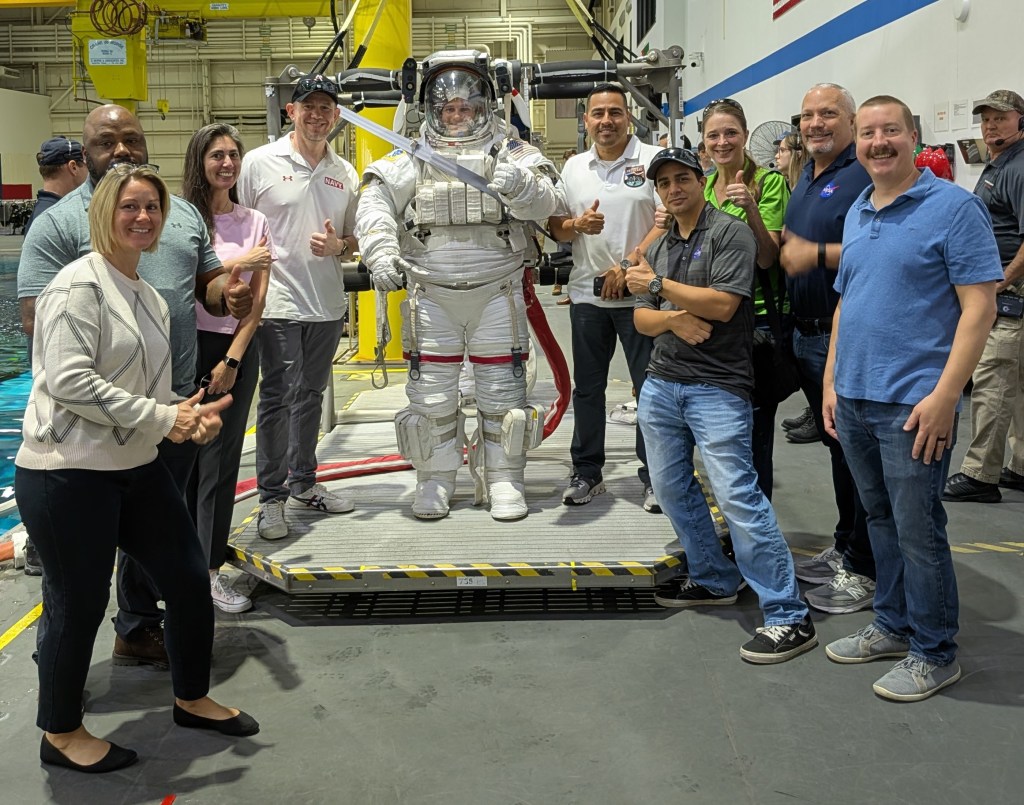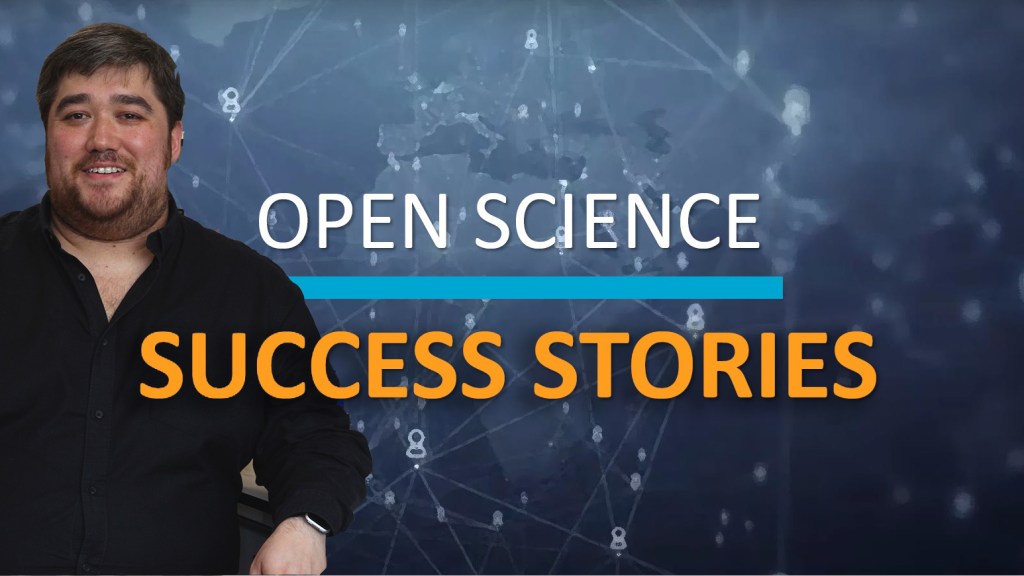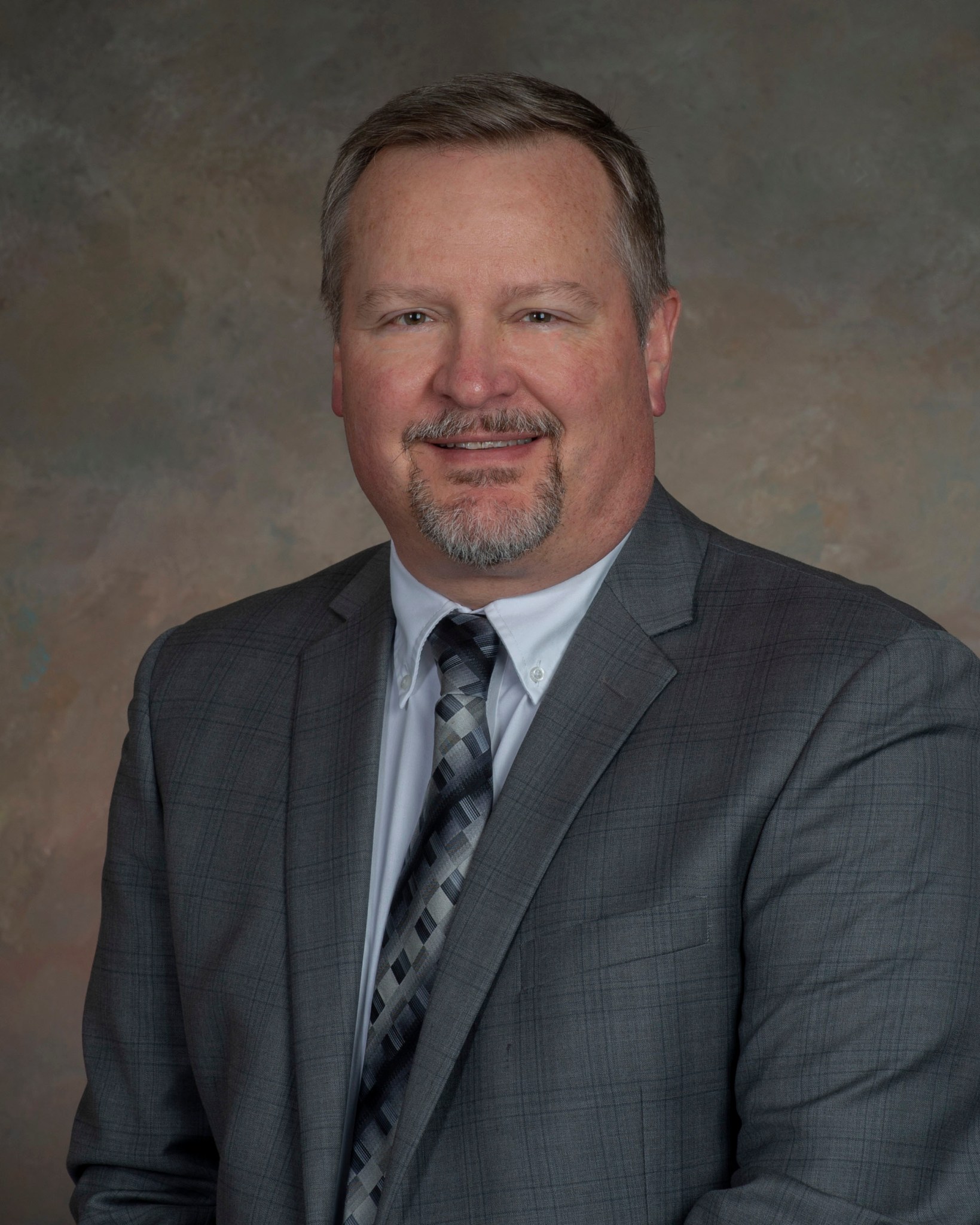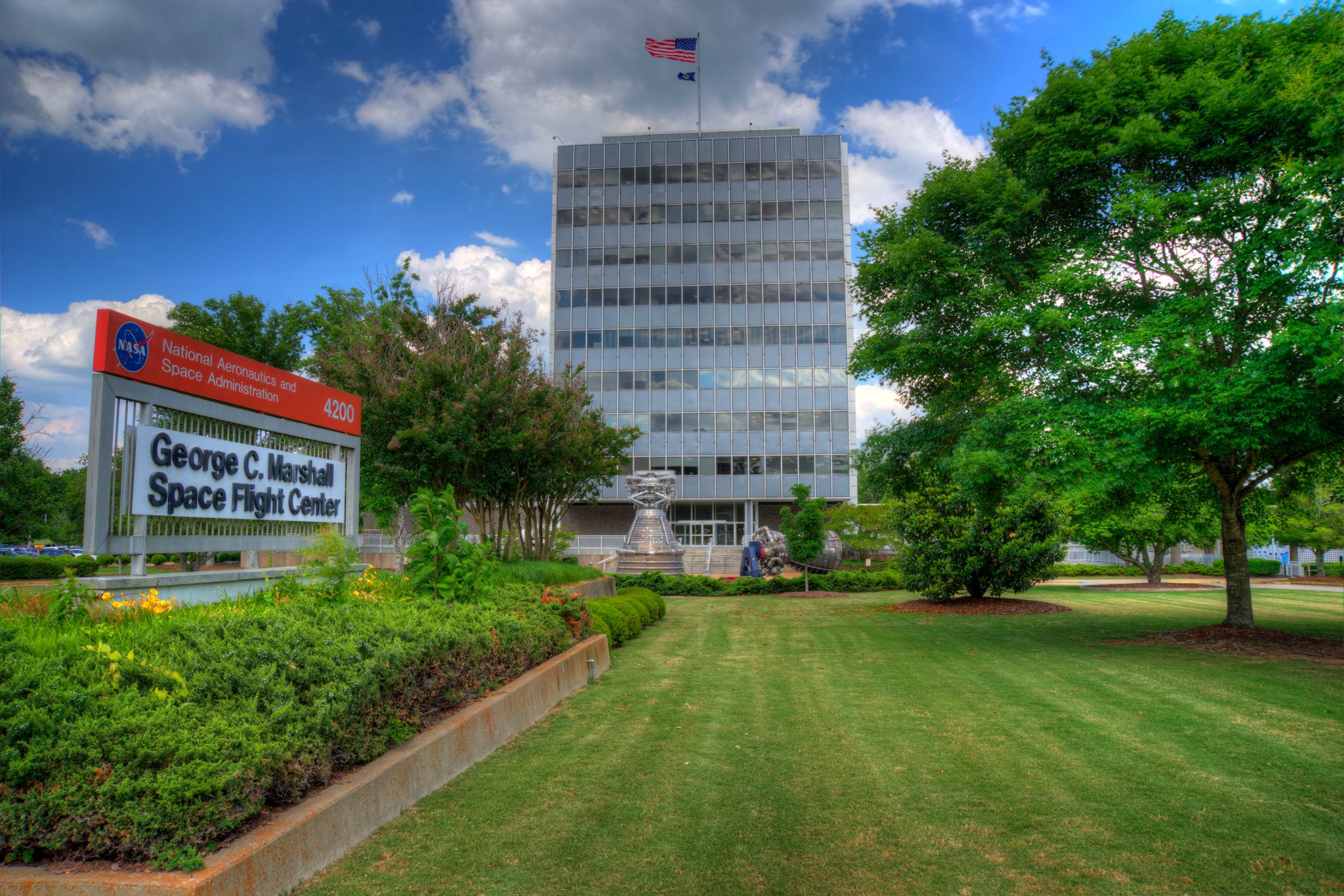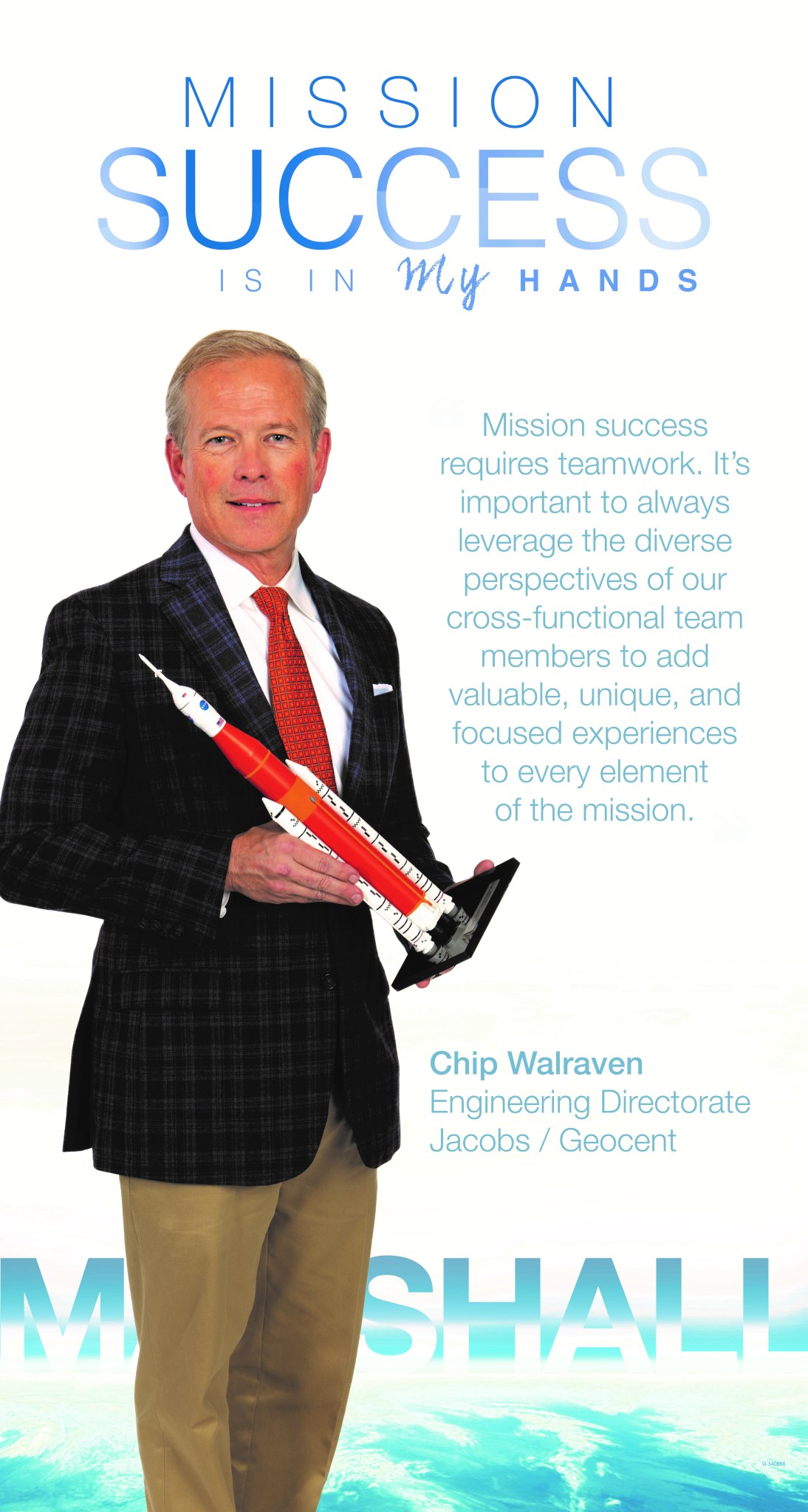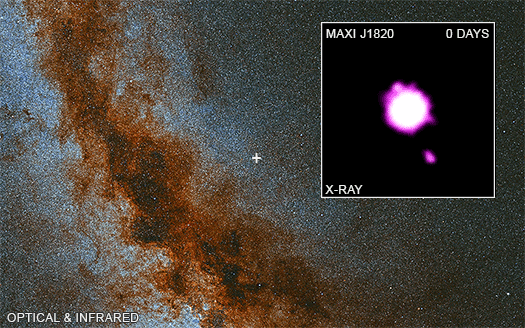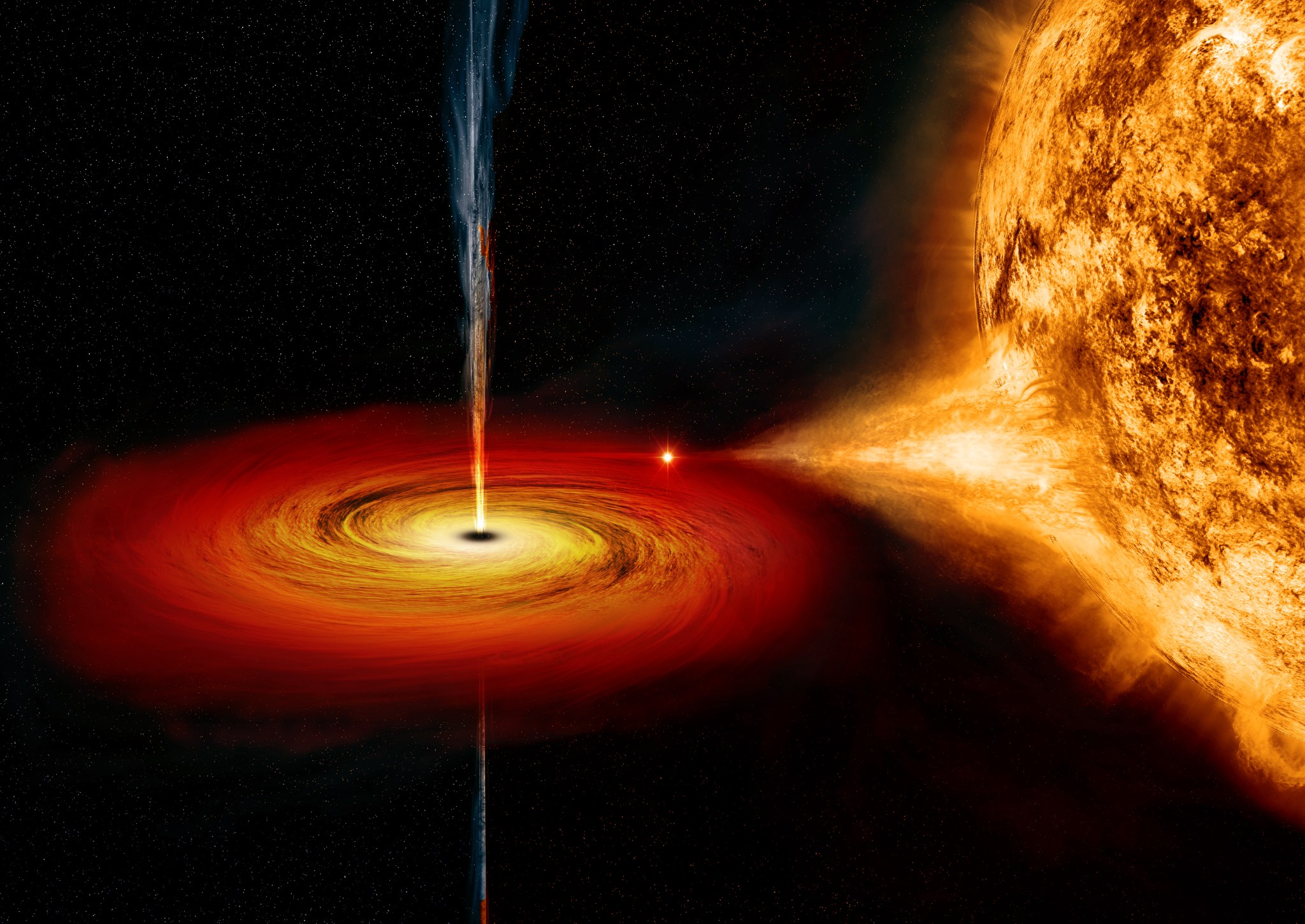In This Week’s Star
- Where Lightning Strikes, a Scientist is Born: Meet Walt Petersen
- NASA Awards Marshall Operations, Systems, Services and Integration Contract
- NASA Prepares Artemis I Rocket Motors for Shipment to Kennedy
- Mission Success is in My Hands: Chip Walraven
- Chandra Spots Black Hole Flinging Matter into Space at Nearly Speed of Light
- NASA’s Lee Mason to Discuss Kilopower Project at Virtual Tech Talk
- OSIRIS-REx Swoops over Backup Sample Site Osprey, Highlighted on ‘This Week @NASA’
- This Week in NASA History: STS-117 Launches to Space Station– June 8, 2007
Where Lightning Strikes, a Scientist is Born: Meet Walt Petersen
By Will Bryan
The lightning flash nearly blinded him and the crack of thunder was deafening. Yet that was all it took for Walt Petersen — now deputy manager of the Science Research and Projects Division at NASA’s Marshall Space Flight Center — to get hooked on weather.
Petersen’s passion for weather came from an experience he had as a high school senior. While at a drive-in movie theater, lightning struck the speaker post nearest a friend in the car’s passenger seat — briefly shocking his friend, who was holding the attached speaker.
“I remember the flash was so bright and the thunder was instantaneous,” Petersen said. “That really motivated me. I thought weather would be a kind of a cool thing to be involved in.”
Petersen spent more than 30 years as an operational meteorologist and atmospheric scientist in various industry, government and academic positions before moving into his current position in 2019. While feeding his insatiable appetite for science, he focuses on ensuring Marshall’s scientists have the resources they need to rewrite textbooks and improve life on Earth.
“I’ve been learning a great deal from some really smart people in the last year,” Petersen said. “We have an incredible cadre of really smart research scientists at Marshall who are in astrophysics, planetary science, earth science and heliophysics. This is a great environment for me.”
Petersen’s path to where he is now was truly a journey.
Following high school, his weather interest led him to the U.S. Navy, where he served as an aerographer’s mate, collecting weather observations for flight operations on an aircraft carrier. Following his time in the Navy, he continued working in the meteorology field and earned a bachelor’s degree in mathematics with a physics minor from Southern Utah University in Cedar City, and both a master’s degree and a doctorate in atmospheric science from Colorado State University in Fort Collins.
“I got the opportunity to go out and operate the first Doppler weather radar data collection from a U.S. research ship,” Petersen said. “I really enjoyed running a radar and sailing under tropical storms.”
Field work became the base for the next two decades of his career, including his first work with NASA. In 2002, he and his family moved to North Alabama when Petersen began working as a scientist at Marshall for the University of Alabama in Huntsville. He joined NASA as a research scientist in 2008. That year, he started work on what would become the crown jewel of his career.
NASA was building the Global Precipitation Measurement mission’s Core Observatory satellite, which measures the amount of precipitation in storms around the world. The measurements help scientists predict how much rain will fall and the possible flood risk from each storm or system. To ensure the satellite instruments and associated methods used to estimate precipitation are accurate and reliable, teams needed ground truth data — measurements from underneath and within storms that are used to calibrate the satellite-based methods and resultant data. Petersen was selected to lead the GPM ground validation efforts.
“We went out in the field to several locations in the U.S., Finland, Canada, and Brazil, to study all different types of storms that the satellite would sample,” Petersen said. “If you can get the right physical model for the process you’re trying to measure with a satellite-based remote sensor, then you’re going to be able to do it anywhere on the globe and you’ll be able to do it right. That was a key thing we really went after with GPM.”
Petersen’s team also collected ground truth data on snowfall. Through a partnership with the South Korea Meteorological Administration and other international partners, they studied the relationship between snowfall rates, snow physics and the mountainous terrain around the 2018 Winter Olympics in Pyeongchang, South Korea. For his body of scientific work and his efforts associated with GPM, Petersen won the NASA Exceptional Scientific Achievement Medal in 2018.
Three decades into his career, he began looking at what else he would like to achieve.
“One of the other things I really, really wanted to accomplish was to get myself in a position where I could learn about and facilitate some of the other key sciences that NASA does,” Petersen said.
Today, he helps ensure the scientists he leads have the resources they need while fostering collaborations with other Marshall, NASA and external organizations.
“There’s a lot of really brilliant engineers we have at Marshall who do great stuff, and we work with them to develop different instruments and run science missions,” Petersen said.
Petersen hopes he can help lightning strike again and that the scientists he leads can one day say that he helped them achieve their career goals.
“When all is said and done, that is the objective. That’s where I want to be,” Petersen said.
To learn about the science being done at Marshall, visit here.
Bryan, an ASRC Federal/Analytical Services employee, supports the Office of Strategic Analysis & Communications.
NASA Awards Marshall Operations, Systems, Services and Integration Contract
NASA has awarded the Marshall Operations, Systems, Services and Integration contract at Marshall Space Flight Center to SGT LLC of Greenbelt, Maryland.
The company will provide the necessary management, personnel, equipment and supplies to ensure mission operations and ground systems development services for NASA programs, project offices, payload developers, educational institutions, international partner space agencies and commercial partners at Marshall.
The cost-plus-award fee mission services contract — with an indefinite-delivery and indefinite-quantity component — has a base period of one year, which begins Oct. 1. The base period will be followed by one two-year option and five one-year option periods, which may be exercised at NASA’s discretion. The contract has a potential mission services value of $570.3 million, including options.
Under the contract, SGT LLC will be responsible for providing support and products for the development and execution of spaceflight operations that are the responsibility of the Human Exploration Development & Operations Office at Marshall.
These services include multiprogram facilities, systems and services — both local and remote — that support various spacecraft, payload, satellite and propulsion systems operations. This support also includes the Huntsville Operations Support Center, which enables all mission phases, including planning, testing, simulations, prelaunch, launch, postflight and all aspects of flight operations.
The Human Exploration Development & Operations Office also provides engineering, operations, maintenance and system development services and tools to program and project requirements. Primary program customers include the International Space Station Program, led by NASA’s Johnson Space Center, and the Space Launch System Program, led by Marshall.
NASA Prepares Artemis I Rocket Motors for Shipment to Kennedy
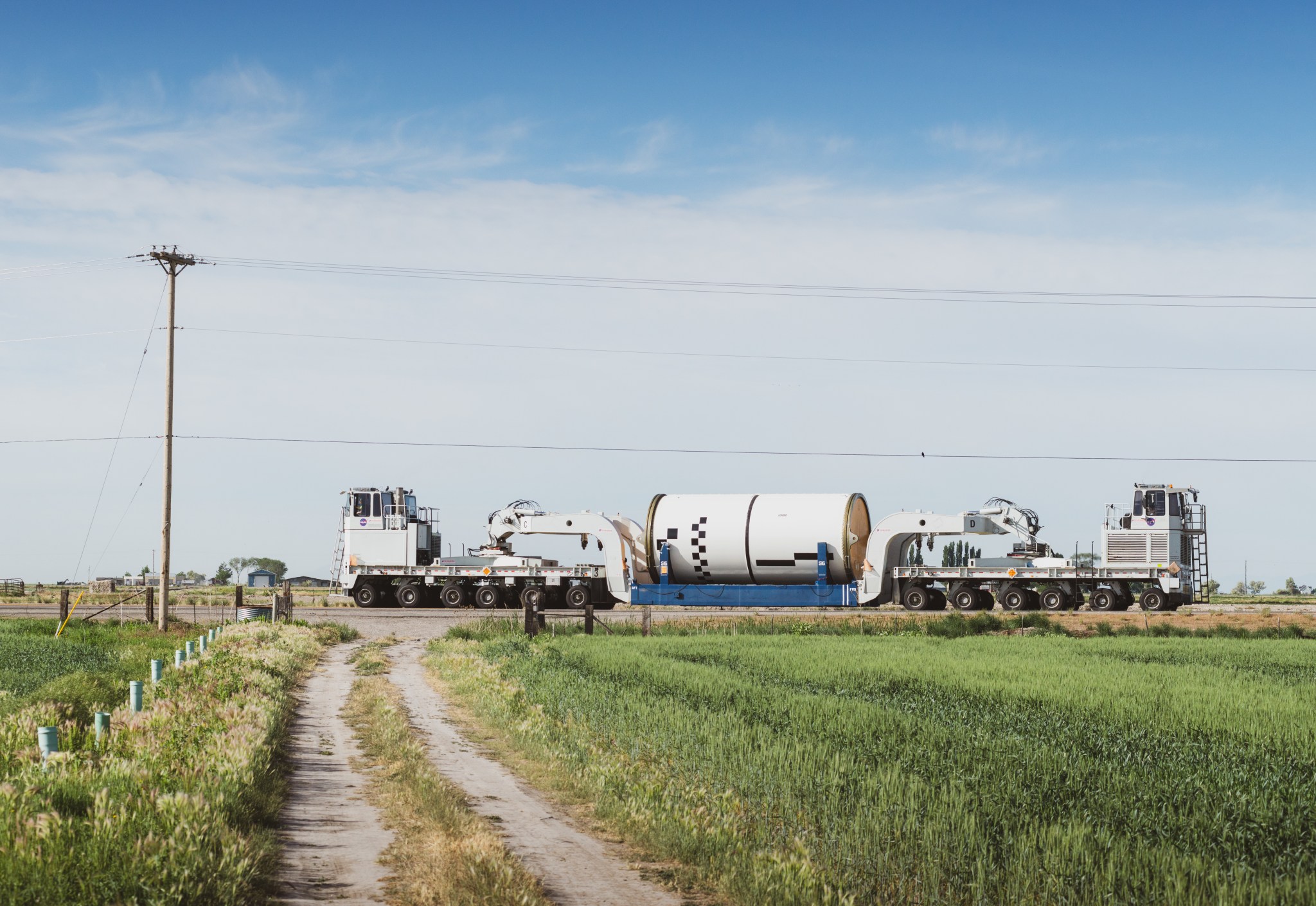
Specialized transporters move each of the 10 solid rocket motor segments for NASA’s Space Launch System rocket from the Northrop Grumman facility in Promontory, Utah, in preparation for shipment to NASA’s Kennedy Space Center. The cross-country journey of the SLS booster segments is an important milestone toward the first launch of NASA’s Artemis program. Each SLS solid rocket booster has five booster segments that are each filled with propellant with the consistency of a pencil eraser. Once at Kennedy, NASA’s Exploration Ground Systems team will begin processing the rocket motor segments with the forward and aft parts of the booster that were previously assembled at Kennedy’s Booster Fabrication Facility. Initial stacking of the aft assembly will occur at Kennedy’s Rotation, Processing and Surge Facility. The booster segments will also be kept at the RPSF until stacking on the mobile launcher inside Kennedy’s Vehicle Assembly Building. (Northrop Grumman)
Mission Success is in My Hands: Chip Walraven
Editor’s note: This is the third in a series of articles spotlighting how eight team members at NASA’s Marshall Space Flight Center make meaningful connections between their jobs and the safety and success of NASA’s missions. The Mission Success Is in Our Hands initiative is a centerwide campaign led by Marshall’s Safety and Mission Assurance Directorate and partner Jacobs Engineering of Huntsville. It promotes and strengthens the center’s focus on mission, hardware and crew safety.
By Rick Smith
If there’s an unofficial motto for NASA’s ground support equipment team — the folks tasked with lifting, hauling and moving hardware — engineer Chip Walraven said it’s “Last to know, first to deliver.” That wry slogan reflects the complexity of building, testing — and transporting — the nation’s cutting-edge rocket hardware.
As senior systems engineer for spacecraft and vehicle support in the Engineering Directorate at NASA’s Marshall Space Flight Center, Walraven leads the ground support equipment team for NASA’s Space Launch System core stage, the biggest piece of flight hardware ever built, soon to carry Artemis Generation explorers back to the Moon.
His pride stems from experience. “Even with last-minute plan changes, we strive to deliver flawlessly every time,” he said.
Walraven and his team develop and maintain SLS core stage system and subsystem requirements and head up design reviews, testing and certification for all ground support equipment used to transport, lift and handle this crucial flight hardware. He’s also Marshall’s principal liaison with Geocent of Huntsville, part of the Jacobs Space Exploration Group providing NASA with state-of-the-art engineering support services.
“We manage the full lifecycle of NASA flight hardware, from concept design to launch pad delivery and flight,” he said. “We factor in design parameters, mission goals, human requirements, safety, materials, manufacturing, testing and verification.”
It all feeds back into the team’s oversight of how the stage and other SLS hardware is accommodated by the ground equipment used to handle, lift, rotate, install and transport it. And that’s no small task.
“Every voice from design to launch brings new perspectives and new challenges to integrate,” he said. “How much mass are you lifting and moving? What kind of welds are possible on this material? Can technicians fit into this space to conduct repairs? We go through a lot of iterations, and document the progress of each element, component and integrated piece of hardware, every step of the way.”
Walraven has served the ground support equipment team since 2012, during the first preliminary design review for the SLS core stage structural test article. The group is tasked to deliver flight hardware to the launch pad safely and efficiently, anticipating and minimizing risk to humans and hardware alike.
“From leading those initial design reviews to final delivery of the hardware, I learned the importance of teamwork, of relying on the deep, cross-functional involvement of design, structural, safety, quality, human factors, manufacturing and transportation engineers,” he said.
Walraven, a Montgomery, Alabama, native who earned a bachelor’s degree in mechanical engineering from Auburn University in 1985, joined Marshall as a systems engineer in 2007. He was deputy manager of the upper stage test subsystem for the Ares rocket — the preliminary next-generation rocket that paved the way for SLS. He later became lead systems engineer for ground support equipment for SLS, the most powerful rocket ever built.
One of his biggest sources of pride is NASA’s SLS Pathfinder test article, which helped SLS engineers troubleshoot early challenges — from vehicle design and dynamic structural issues to how such a massive piece of hardware could be safely transported.
“We didn’t want to risk the actual core stage during early testing,” he said. The team instead pitched the idea of a dummy stage, a steel-beam replica — and built it in Alabama. “We used it to test our transport systems, lifted it into a NASA’s Stennis Space Center test stand, and shipped it by barge to NASA’s Kennedy Space Center. It enabled us to resolve numerous issues with no risk to actual flight hardware. It was a magnificent tool, and a wise investment.”
As the SLS core stage is readied for its launch date, Walraven shows no sign of throttling back on oversight of ground support equipment. “We are blazing a new path into the solar system, and I can’t wait to tell my grandchildren about the work we did here,” he said. “Every role is vital, and every task serves the mission.”
Come to think of it, that’s not a bad motto either.
Smith, an ASRC Federal/Analytical Services employee, supports the Office of Strategic Analysis & Communications.
Chandra Spots Black Hole Flinging Matter into Space at Nearly Speed of Light
Astronomers have caught a black hole hurling hot material into space at close to the speed of light. This flare-up has been captured in new animated images from NASA’s Chandra X-ray Observatory.
The black hole and its companion star make up a system called MAXI J1820+070, which resides in the Milky Way galaxy about 10,000 light-years from Earth. Formed by the destruction of a massive star, the black hole has a mass about eight times that of the Sun, identifying it as a so-called stellar-mass black hole.
The companion star orbiting the black hole has about half the mass of the Sun. The black hole’s strong gravity pulls material away from the companion star into an X-ray-emitting disk surrounding the black hole.
While some of the hot gas in the disk will cross the event horizon — the black hole’s gravitational point of no return — and fall in, some is instead blasted away in a pair of jets pointed in opposite directions, launched from outside the black hole’s event horizon along magnetic field lines. The new footage of this behavior is based on four observations obtained with Chandra in November 2018 and February, May and June of 2019, and reported in a paper led by Mathilde Espinasse of the Université de Paris.
Just how fast are the jets of material moving away from the black hole? From Earth’s perspective, the northern jet appears to be moving at 60% the speed of light, while the southern one is traveling at an impossible-sounding 160% of light speed. This is an example of superluminal motion, a phenomenon that occurs when something travels toward us near the speed of light, along a direction close to our line of sight. This means the object travels almost as quickly as the light it generates, giving the illusion that the jet’s motion is more rapid than the speed of light.
In this case, the southern jet is pointing toward Earth, so it appears to be moving faster than the northern one. The actual velocity of the particles in both jets is greater than 80% of the speed of light. Only two other examples of such high-speed expulsions have been seen in X-rays from stellar-mass black holes.
MAXI J1820+070 also has been observed at radio wavelengths by a team led by Joe Bright from the University of Oxford in England, who previously reported the detection of superluminal motion of compact sources based on radio data alone that extended from the launch of the jets on July 7, 2018, to the end of 2018. Radio observations conducted with the Karl G. Jansky Very Large Array and the MeerKAT array also were used to study the jets.
Because the Chandra observations approximately doubled the length of time the jets were followed, a combined analysis of the radio data and the new Chandra data by Espinasse and her team gave more information about the jets. This included evidence that the jets are decelerating as they travel away from the black hole.
Most of the energy in the jets is not converted into radiation, but instead is released when particles in the jets interact with surrounding material, possibly causing them to decelerate. When the jets collide with surrounding material in interstellar space, shock waves — akin to sonic booms caused by supersonic aircraft — occur. This process generates particle energies higher than that of the Large Hadron Collider.
Researchers estimate that some 400 million billion pounds of material was blown away from the black hole in the two jets launched in July 2018. This amount of mass is comparable to about a thousand Halley’s Comets — about 500 million times the mass of the Empire State Building.
A paper describing these results is published in the latest edition of The Astrophysical Journal Letters. NASA’s Marshall Space Flight Center manages the Chandra program. The Smithsonian Astrophysical Observatory’s Chandra X-ray Center controls science and flight operations from Cambridge and Burlington, Massachusetts.
NASA’s Lee Mason to Discuss Kilopower Project at Virtual Tech Talk
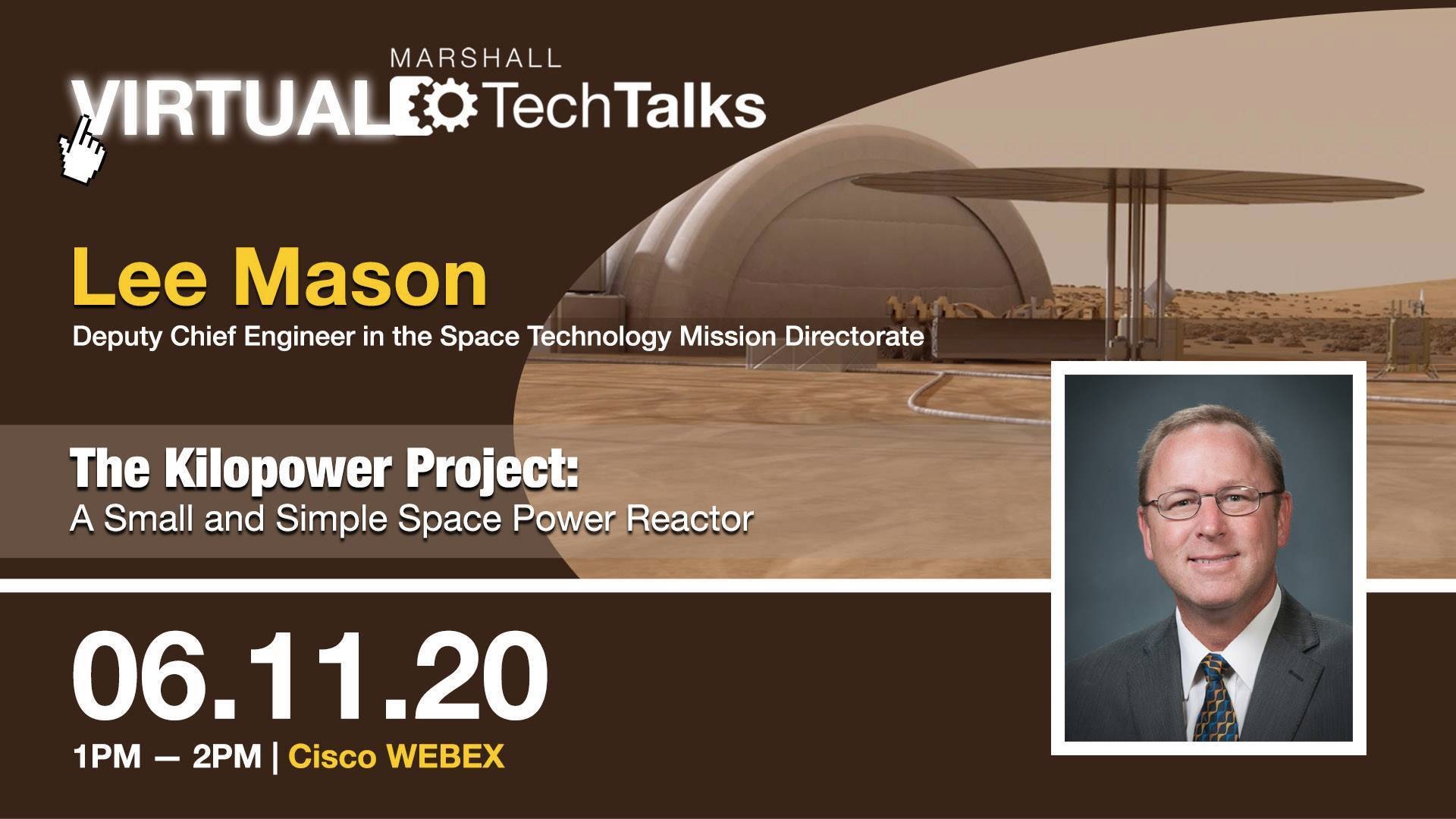
The latest installment of NASA’s Marshall Space Flight Center’s Tech Talk series will be held virtually at 1 p.m. June 11, featuring Lee Mason from NASA Headquarters. Mason, deputy chief engineer in the Space Technology Mission Directorate, will present a summary on the Kilopower Project, beginning with its origin as a Planetary Science Decadal Study concept in 2010 through prototype testing in 2018. The talk will be streamed via Webex, and the login information can be found here. The Tech Talk series is presented by the Marshall Center Chief Technologist’s Office. (NASA)
OSIRIS-REx Swoops over Backup Sample Site Osprey, Highlighted on ‘This Week @NASA’
NASA’s OSIRIS-REx mission is featured in “This Week @NASA,” a weekly video program broadcast on NASA-TV and posted online.
The OSIRIS-REx spacecraft captured images of Osprey — the mission’s backup sample collection site on asteroid Bennu — during a reconnaissance pass May 26. The spacecraft passed just 820 feet above the spot, the closest from which Osprey has been imaged. OSIRIS-REx is scheduled to make its first sample collection attempt at primary site Nightingale on Oct. 20.
OSIRIS-REx is a project of the Science Mission Directorate’s New Horizons Program, managed by NASA’s Marshall Space Flight Center.
View this and previous episodes at “This Week @NASA” on NASA’s YouTube page.
This video is available for download from NASA’s Image and Video Library:
https://images.nasa.gov/details-Launching%20America%20On%20a%20Commercial%20Spacecraft%20on%20This%20Week%20@NASA%20%E2%80%93%20June%205,%202020 Credits: NASA
This Week in NASA History: STS-117 Launches to Space Station– June 8, 2007
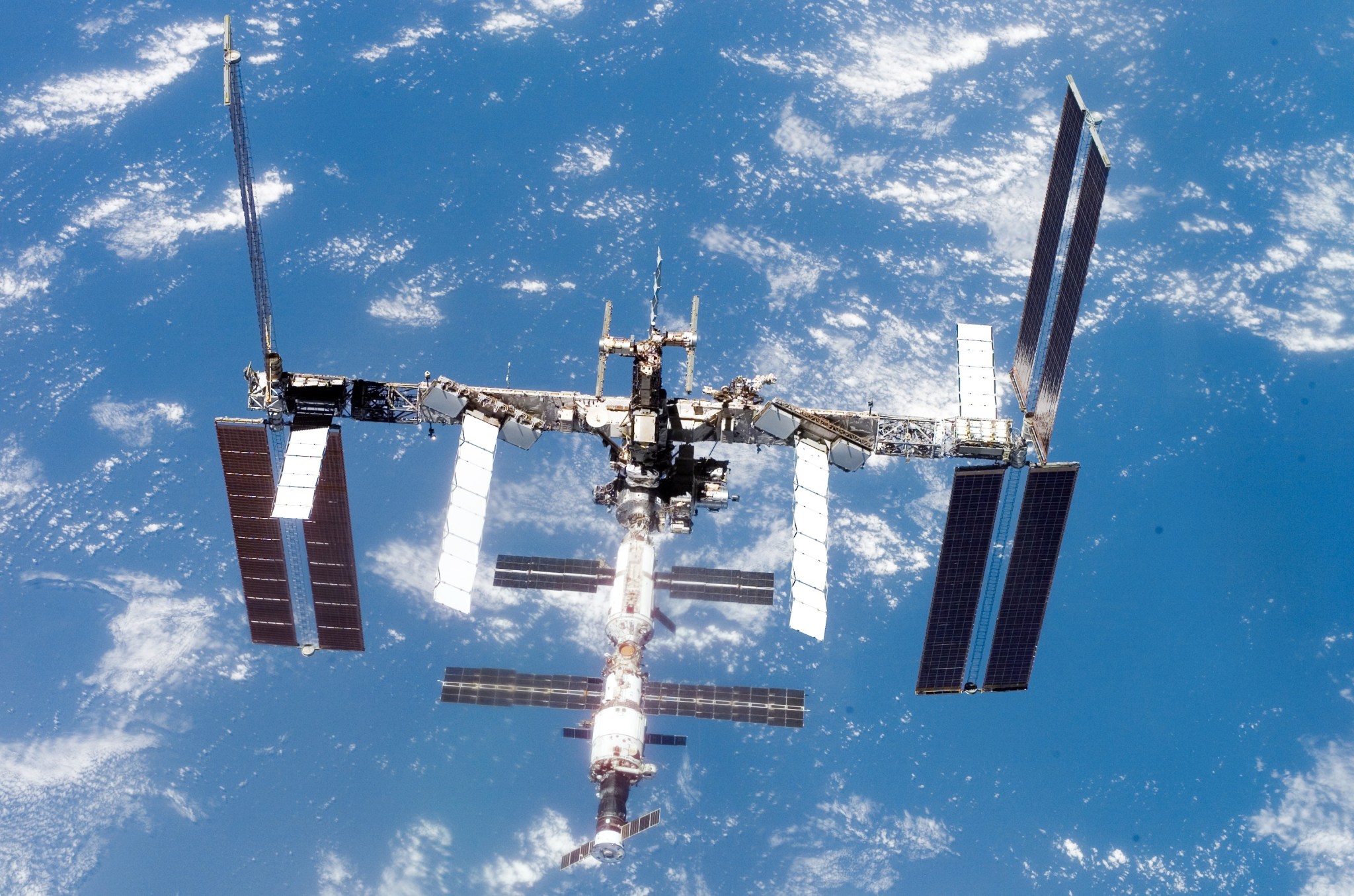
This week in 2007, space shuttle Atlantis, mission STS-117, launched from NASA’s Kennedy Space Center to the International Space Station. Mission objectives included delivering the second and third starboard truss segments and a set of solar arrays to the orbiting lab. Here, the space station’s new configuration is seen during Atlantis’ departure and fly-around. Today, the Payload Operations Integration Center at NASA’s Marshall Space Flight Center serves as “science central” for the space station, working 24/7, 365 days a year in support of the orbiting laboratory’s science experiments. The NASA History Program is responsible for generating, disseminating and preserving NASA’s remarkable history and providing a comprehensive understanding of the institutional, cultural, social, political, economic, technological and scientific aspects of NASA’s activities in aeronautics and space. For more pictures like this one and to connect to NASA’s history, visit the Marshall History Program’s webpage. (NASA)

